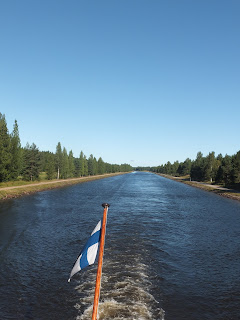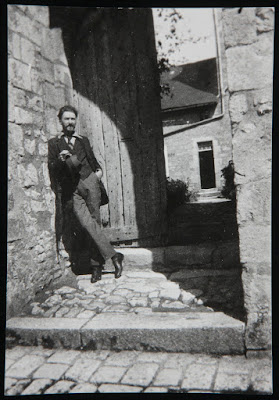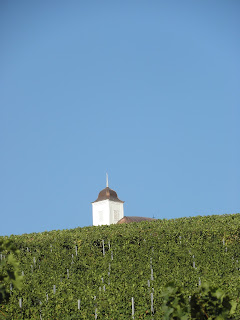Lappeenranta: A Travel Essay
In Kauppakatu, the pedestrianised main street of Lappeenranta Lake Saimaa Finland Russia , one in nearby Lake Ladoga
and the other far from salt water in Lake
Baikal in Siberia .
How the Baikal seals, nearly 100,000 of them, came to be in Lake Baikal
I asked several people I met in Lappeenranta Lappeenranta
Not far from the granite seal I spotted what looked to be a
hairless man in sunglasses. At a first glance, however, the smoothness of the
skin covering his skull gave him an appearance not unlike that of a pale wet
seal. He was seated at a table outside a café and held a mobile phone tightly pressed
to what I assumed was his ear. Now in the country of Nokia, a phone pressed
against an ear, even against the ear of an almost-extinct seal, is not a
surprising sight. What drew my attention was that the seal, the bald man,
seemed at first to have an entirely featureless face: no nose, no mouth, no
eyebrows and, quite possibly, no eyes behind the dark glasses. It took me a few
moments to realise that he had his glasses on the back of his head. When he
stood, I saw that emblazoned across his chest - actually, of course, across his
back - his black t-shirt shouted out the words, in bold white capitals,
"Jesus is a Cunt". What, I wondered, other than a complete lack of
understanding of the English that is hard to credit in Finland
We walked down Kauppakatu
then straight ahead up the street that leads into the fort. This is where Lappeenranta Lake Saimaa Sweden
fortified the promontory when this country was part of the Kingdom of Sweden
From 1743, the new border between Sweden
and Russia ran down the
middle of Lake Saimaa Lappeenranta Finland linked by lakes and military canals with
the aim of protecting the then newly established Russian capital in St Petersburg
Among the buildings within the perimeter of the Lappeenranta
Fort is the oldest Orthodox church building in Finland Church of St Mary
Almost every active Orthodox church of any size that I have
visited has a little shop just inside the main door where you can buy postcards
and candles and reproduction icons. The church in Lappeenranta
General Suvorov was Russia Russia Alps with an army of elephants. Gannibal, under the
patronage of Tsar Peter the Great, had worked his way up through the ranks of
the Russian Army, from slave purchased in the bazaars of Constantinople to
serf-owning nobleman himself.
Alexander Vasilyevich Suvorov was born in 1730. The thin,
pinched face in his portraits is not that which you would normally associate
with a military genius. Yet, in his entire career, he never lost a battle;
indeed, he won more than sixty significant engagements often against
numerically superior forces. His years in the field coincided almost exactly
with the expansionist reign of Tsarina Catherine the Great.
Suvorov fought the Prussians in the Seven Years War (1756-63)
and the Poles later in the decade, capturing Cracow Russia
and Austria Danube .
In his history of the Ottoman Empire , Lords of the Horizon, Jason Goodwin
writes:
In the summer of 1774 General
Suvarov appeared as Russia 's
genius, and the bayonet's devotee. 'The ball is a fool - the bayonet a hero!'
was one of his maxims. He taught his soldiers to attack instantly and
decisively: 'attack with the cold steel - push hard with the bayonet!' His
soldiers adored him, and he never lost a single battle. He joshed with his men,
called the common soldiers 'brother', and shrewdly presented the results of
detailed planning and careful strategy as the work of inspiration. He announced
the capture of Ismail in 1791 to the Tsarina Catherine in a doggerel couplet,
after the assault had been pressed from house to house, room to room, and
nearly every Muslim man woman and child in the city had been killed in three
days of uncontrolled massacre, 40,000 Turks dead, a few hundred taken into
captivity. For all his bluffness, Suvarov later told an English traveller that
when the massacre was over he went back to his tent and wept.
From the Ottoman Wars, Suvorov went on to lead the
suppression of the Polish uprising. At the Battle of Warsaw in 1794, Kosciuszko's
Polish troops were defeated and the Russian troops, allegedly by then out of
their commander's control, went on to massacre some 20,000 civilians in the
Warsaw district of Praga.
Tsarina Catherine the Great also at that time gave Suvorov
charge of reinforcing the lines of defence against Sweden
in southeast Finland Sweden in
1788-90, simultaneous with that against the Ottoman Turks in the south, had
shown how vulnerable St Petersburg Lake
Saimaa (Lappeenranta
among them) reinforced, but four short military canals across the necks of
peninsulas jutting into Lake
Saimaa
The Suvorov Military Canals, as they are known, are still
there. The Finnish authorities have, not so long ago, rescued them from the
claims of nature and made them available to boaters and tourists.
And the voice? Perhaps I had
heard the woman on the desk in the church correctly. Catherine the Great died
in 1796. Her son Tsar Paul, had an intense dislike of his mother, quite
possibly related to the fact that she had had his father, Tsar Peter III,
killed when he was a lad of eight. So much did he dislike her that he altered
the laws of succession to the Russian throne to ensure that no woman would ever
sit on it again. Among other breaks with his mother's policy and circle of
advisors, Paul sent General Suvorov into retirement. It is said that during his
retirement at his country estate of Konchanskoye he tolled the church bell on Sunday
mornings and sang in the village choir alongside his peasants.
I had come across traces of General Suvorov, if not his fine singing
voice, before. There is a monument to him in a most unlikely high mountain
valley in Switzerland - at
Teufelsbrücke (Devil's Bridge) in the Schöllenenschlucht gorge on the north
side of the St Gotthard
Pass.
In 1799, the crowned heads of Europe
were under threat from the armies of Revolutionary France. In its war against France , Austria Italy Trebbia River
- near to the site of Hannibal Italy Holy Roman Empire
titles.
Then the Allies changed their plans. They decided to invade France from north of the Alps .
Suvorov was ordered to join the other Allied armies on the other side of the
mountains, but before he could do so, the Allies suffered a major defeat by a
French Army under Masséna at Zürich. It was September when Suvorov began his
trek across the Alps . Battling rain, snow and
French troops, and hauling its heavy field artillery, Suvorov's army reached
the upper Rhine exhausted but largely intact
on 7 October 1799.
Today, an eleven-day walking trail - the Via Suwarow -
follows the route of Suvorov's Army through the Alps .
Starting at Airolo in the upper Ticino, you cross the St Gotthard Pass Altdorf
The Via Suwarow hiking trail today is ranked as "difficult".
The Russian army's original crossing of the Alps by this route was the marvel
of the age, a feat unlike any since Hannibal 's
crossing of the Alps with his African elephants
2000 years earlier. In recognition of this feat Suvorov was made a
Generalissimo of the Russian Empire, the fourth and last to carry this
accolade; though Stalin would later award the title to himself in Soviet times.
Suvorov died the next year at home in St Petersburg
*
Beside the church in Lappeenranta
Back in the centre of the modern town, near the seal on its
plinth, is another wooden building of the same era and similar colour. Since
1993 the home of the Wolkoff family has been a museum to a now-vanished, though
not-so-long-ago vanished, way of life. Katja, a student from Tallinn ,
across the Gulf of Finland in Estonia
Ivan Wolkoff (Volkhov) came to Lappeenranta
in the 1840s, from a "serf background" in Russia Russia Lappeenranta
*
On a Sunday morning, when the streets of Lappeenranta Finland
Wood, though, is fundamental to Finland Norway , Sweden and adjacent northern Russia Finland Scandinavia ,
nowadays keep the smoke dust entering the atmosphere to a minimum.
During the period of the Second World War, when Finland was fighting the Soviet
Union , wood was the country's main source of energy. In each year,
more than ten million tonnes of wood were felled. Hakaniemi Market Square Helsinki Finland
had been independent from Russia
We went past huge booms of logs, covering almost the entire
surface of the lake between the M/S Karelia and the shore where the silent UPM plant
and its white vapour plumes rise. Then, a couple of kilometres farther on, we
entered the Saimaa Canal that would take us to the sea at Vyborg Lake Saimaa
When the original Saimaa
Canal Finland
In places you can still see the course of the old canal, its
disused stairs of small locks alongside the big automated locks of the new
canal. But it is no longer used. Traffic ended when half of the territory
through which it passed became part of the Soviet Union .
In order to restore access from Lake Saimaa to the sea,
Finland arranged to lease that part of the canal now on Russian territory from
the Soviet Union in 1963 and set about building a more modern canal, wider and
with fewer, but higher and automated, locks. The new canal was opened in 1968.
Today's canal passes between forested banks. In places it
crosses natural lakes where exposed granite slopes steeply into the water. You
see few houses, either in the Finnish stretch or in the Russian - until the
waterside dachas multiply as you approach Vyborg Russian Federation only on the quayside in Vyborg , the ship was checked here by men (and a woman) in
big red-striped khaki hats that have not change in shape since the days of the USSR
Most of the historic province
of Karelia today lies in Russia Finland
a generation ago, replaced by a population that was settled here from elsewhere
in the Soviet Union . While we were in
Lappeenranta there was a temporary exhibition at the museums in the fort - Barefoot: Ten lives in the Karelian Isthmus
- that traced the lives in photographs, paintings and documents of ten
individuals who had lived quite ordinary lives in Karelia when it was part of
Finland. It was quite simply one of the best conceived and most moving of such
exhibitions that I have ever seen.
Here we met Hilma Ylä-Outinen, a maid at Niemenlautta Mansion
in Vyborg Bay, who posed in a doorway, barefoot and holding a lamb. She was
twelve years old in the summer of 1913 when Hugo Simberg painted her. We saw
another Hugo Simberg painting of a family walking naked across a plank to a
bathing hut perched on stilts above the water. We made the acquaintance of
Toivo Kuula, a musician who, in the turbulence of 1918, was accused of being a
Bolshevik at a drunken Vyborg Vyborg St Petersburg Vyborg St Petersburg in the
early 1800s, had founded the firm named after him in Tampere Finland ,
it grew to be Tampere Finland
and the USSR Finland Vyborg
During the days we were in Vyborg Vyborg
"It was much better in Soviet times," said Oleg,
whose father had grown up here. "The roads were paved then." The
former village shop is a gutted black concrete shell today. A few of the village's
wooden dachas are painted and have flowers growing in gardens around them. But
most are falling down. They look abandoned, but they are probably not. In some
plots modern, ostentatious, but ugly, houses are under construction. There are
few cars. But one, the shiniest of them all, was a Fiat painted, along both its
sides, with the famous photograph of the hammer and sickle being raised over
the Berlin Reichstag in 1945.
"Sometimes," Oleg said, "I bring elderly
Finnish tourists to the fields around here to see the farms where they came
from. But there is nothing left to see. A few foundation stones, maybe. Nothing
else."
*
I went below deck to the M/S Karelia's bar. The barman had
been doing a good trade in half-litre plastic mugs of beer since before we left
the dockside in Lappeenranta Vyborg
"From Ethiopia
"Have you lived in Finland
"Since I was six months old."
"Have you ever gone back to Ethiopia
"Only once. When I was ten."
There, I thought, is another story. There, in this summer of
2015, in this summer of perilous sea crossings and long treks through foreign
lands, go a million other stories.
I went back up on deck just before the Cvetotchnoe Lock, just
in time to see a cargo ship pass us, going from the Baltic to Lake Saimaa ,
from Russia to Finland Saimaa
Canal St
John 's and flying the red maple leaf of Canada Karelia .











Comments
Post a Comment